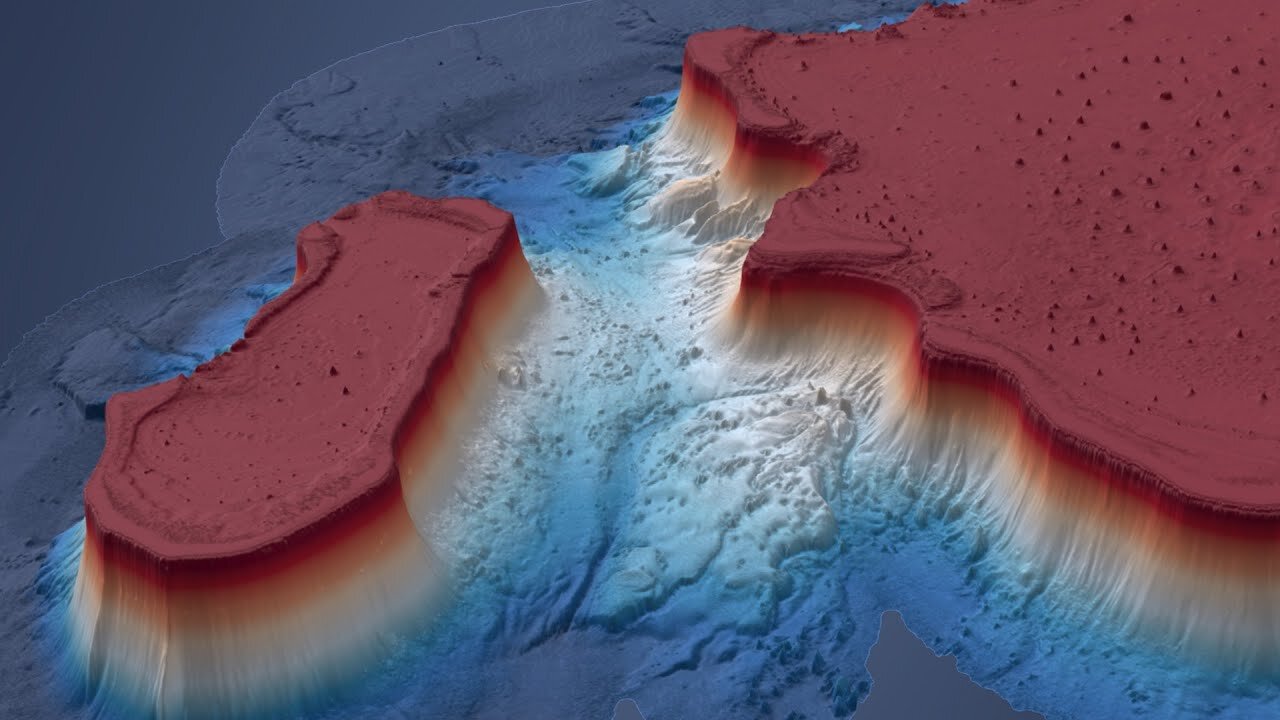Premium Only Content

Rare Seamounts, Canyons and Reefs of the Coral Sea Marine Park
Rare Seamounts, Canyons, and Reefs of the Coral Sea Marine Park
Very little is known about mesophotic (30-150m) and deep-water coral communities in Australia. Across two Schmidt Ocean Institute voyages in 2020, scientists explored the frontier region of Australia's Coral Sea Marine Park.
This Project was funded by the Schmidt Ocean Institute, the Director of National Parks, and project partners. Bathymetry data and seafloor imagery were collected by the Schmidt Ocean Institute aboard the RV Falkor.
This flythrough video highlights deep and mesophotic seabed environments within the Coral Sea Marine Park, offshore northeastern Australia. The mesophotic zone, commonly referred to as the ‘twilight zone’ represents the depth range below the brightly lit shallow waters down to the maximum depth that sunlight can penetrate for photosynthesis to occur (~ 30 to 150 meters beneath the sea surface). The featured Malay and North Flinders Reefs represent mid-ocean platform reefs and Cairns Seamount hosts a thriving coral reef community atop what is likely an extinct volcanic cone. These locations represent a range of benthic communities, which vary with depth and substrate type. Soft sediments (sands, muds, and oozes) dominate the deep seafloor, with evidence of water currents that produce bedforms showing active sediment transport at these depths. The walls and flanks of the platform reefs are very steep, with evidence of slope failure where rocky head walls have collapsed and deposited large blocks and boulders on the seafloor, which provide important habitat for sessile and mobile invertebrates including soft corals and sponges as well as cryptic octopus.
Typical mesophotic habitats included vast Halimeda algal meadows and rhodolith beds interspersed with soft corals and sponges on soft sediment. Hard substrates were typically colonized by plate and encrusting hard Scleractinian corals (e.g. Leptoseris and Montipora species), sponges, and ascidians. Many large black corals (Antipatharia) and gorgonians (Octocorallia) were also featured, with several black corals and carnivorous sponge observations representing new species. The reef community atop Cairns Seamount was highly diverse and included many demersal and pelagic fish species. A high abundance and diversity of gelatinous zooplankton were observed in the deep waters between reefs in the Coral Sea, with several new range extensions recorded.
Bathymetry data and seafloor imagery for this flythrough were collected on RV Falkor, owned and operated by the Schmidt Ocean Institute (SOI), during surveys FK200830 and FK200902 in August and October 2020. These surveys were led by Geoscience Australia and James Cook University. Collaborative research partners included the Japan Agency for Marine-Earth Science and Technology, The University of Tokyo, the Queensland University of Technology, the Queensland Museum, The University of Sydney, the University of Tasmania, and the University of Wollongong.
-
 12:12
12:12
GritsGG
10 hours ago23 Warzone Wins in a Row! (Cypher AR)
9.02K -
 2:12:07
2:12:07
Side Scrollers Podcast
17 hours agoCULTURE SHIFT CAUSES MELTDOWNS + MASSIVE CENSORSHIP EFFORTS RAMP UP | SIDE SCROLLERS LIVE
6.53K5 -
 11:25
11:25
Nikko Ortiz
1 day agoMost Painful Fails
36.5K25 -
 43:55
43:55
pewculture
6 days ago $0.17 earnedIf the Purge was real, this is what we'd do... - EP#24
3.57K3 -
 8:14
8:14
MattMorseTV
1 day ago $8.67 earnedTrump just DROPPED the HAMMER.
49.3K59 -
 LIVE
LIVE
Lofi Girl
2 years agoSynthwave Radio 🌌 - beats to chill/game to
177 watching -
 22:39
22:39
BlabberingCollector
7 hours agoThe Alphabet Mafia Is Mad At JK Rowling AGAIN
12.2K2 -
 5:30:52
5:30:52
SpartakusLIVE
9 hours agoDuos w/ @GloryJean || #1 Masculine Muscle MASS sears YOUR retinas with MIND BENDING content
219K3 -
 3:05:49
3:05:49
TimcastIRL
8 hours agoNew DOCS PROVE Obama Hillary CONSPIRACY To SABOTAGE Trump Admin | Timcast IRL
217K94 -
 2:29:36
2:29:36
Laura Loomer
8 hours agoEP136: YOU'RE FIRED! White House Vetting Crisis Continues
58.8K39